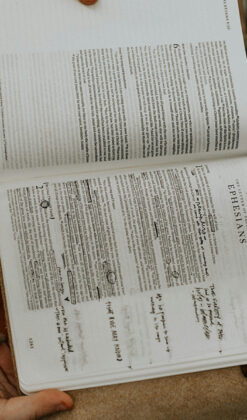The following blog is written by my friend, former student, and Eternity Bible College alumnus, Lance Hancock. Lance currently serves as the assistant to the Vice President (i.e. Me) for Eternity’s Boise extension.
That’s right. Every church has a liturgy. The Anglican church downtown, the Pentecostal church across the tracks, the Baptist church around the corner; Presbyterians, Methodists, Reformed, non-denominational, even the home church on the next street over—each one has its own liturgy.

Liturgy means “work of the people.” Whenever God’s people gather together, they perform a work or a service (now you know why it’s called first service or second service). I grew up in a “non-liturgical” non-denominational church, but I now realize that we were following a liturgy all along: opening fast song, two or three slow songs, a prayer, a reading of the day’s text, a sermon, an offering accompanied by song, and a closing song, usually touching on the theme of the sermon. Then everyone left; the work of the people was finished. Come to think of it, growing up I could have told you exactly what was coming next in the liturgy, even though I didn’t know we had a “liturgy.”
The Pentecostal, tongue-speaking church has its own liturgy, typically involving an extended time of praise through song, as well as time devoted to praying in tongues, a message or messages from the pastor and/or people, maybe even a regular invitation for people to come forth to receive healing. (Speaking of invitations, the Baptist liturgy is [stereotypically] infamous for the altar call, the pinnacle moment of its liturgy.) Then the people leave; their work is complete.
Of course, the above are simply liturgical templates that various churches might practice. The point is to show that every church is liturgical. Regardless of the style of the liturgy, whether it’s “high” or “low” or somewhere in between, the danger of lifeless worship can creep its way into a church. It is not uncommon for Christians to have an especially critical attitude toward highly liturgical worship, for example, as found in an Anglican church service. Too much form, too much recitation, too much planning, not enough freedom. Better to have less form to protect against ritualism, they say. But the truth is, formless worship can become just as rote and ritualistic as intentionally formed worship. That is to say, “non-liturgies” may be just as routine as high liturgies. A greeting from the worship leader may be as habitual as a congregational prayer of invocation. Ecstatic tongue-speaking might be as formulaic as reciting the creeds.
If every church has a liturgy, then the question must be asked: how can the liturgy best serve to glorify God and edify his people?
Liturgies come in all shapes and sizes, varying between different traditions, denominations, and churches. But I would argue that the main theme that drives all good liturgies is one that highlights the story of God’s redemption. If liturgy is a “work of the people,” we need to be sure we know who these people are. Who we are. And we—the church—are the redeemed people of God. Our identity is wrapped up in a story that goes like this.
God, who created the cosmos and set mankind over the earth to be his image bearers, exercising dominion over the creation in a manner that reflects the glory of their Maker. As the story goes, Adam and Eve “dropped the ball” (or “ate the fruit,” if you like) and transgressed their Creator’s command, choosing to rule themselves rather than submit to the God of love. So humanity became enslaved to sin and death. Sin, choosing self-rule, alienated humans from God, and alienation from the source of life inevitably led to death. Rebelling against God’s kingship, mankind sought a different vocation. Instead of multiplying and spreading across the earth per God’s decree (Gen 1), they sought to build a name for themselves and remain in one place (Gen 11).
Bound to sin and death, God began to work for humanity’s freedom, for its redemption. Through a man named Abraham he chose a people to be in covenant relation with, Israel (Gen 12). Through Israel this worldwide delivery would happen, and God launched his redemptive activity by freeing his people from Egyptian slavery. He established a covenant with them and showed them how to be a light to the world, namely, through obedience to his law. But as Adam transgressed, so did Israel, shunning the rule of their covenant God and thus being sent away into exile—the death of a nation.
Until one day, we call it Christmas, the Son of God took on human flesh, and he grew up to be the Israelite par excellence, the Messiah, the representative of God’s people, who themselves had been called to be a sort of representative for the world (Exod 19). But unlike the world, and unlike Israel, Jesus did not defy God’s kingship, but faithfully lived under his rule. Indeed, this man Jesus never transgressed God’s command, but fulfilled it to the uttermost, even to the point of death. And so God raised him from the dead, vindicating him as the truly human one, the quintessential man, the only person to ever fulfill mankind’s vocation of bearing God’s image, and thus the only person never deserving of death.
And so began the great redemption of the world through this man, Jesus. All are called to deny themselves, abandon their self-rule, and follow the way of this truly human one: the way of obedience to God, the way of selfless, cross-bearing love. And all who trust in Jesus receive from him a gift—a promise of God’s new covenant—the Holy Spirit, who unites them to Jesus, who is God, the source of life. Although those who follow Jesus die, yet shall they live because he will return and resurrect them from the grave, liberating them from mortality and sharing with them the dominion of the earth. In this way, God’s people will fulfill their vocation, and continually realize their calling, reflecting the glory of God in the new creation forever and ever. Amen.
That’s our story. That’s our identity. And our liturgies should reinforce our identity as the redeemed people of God. In the next blog I’ll talk about how liturgy, “the work of the people,” can help shape our identity.











